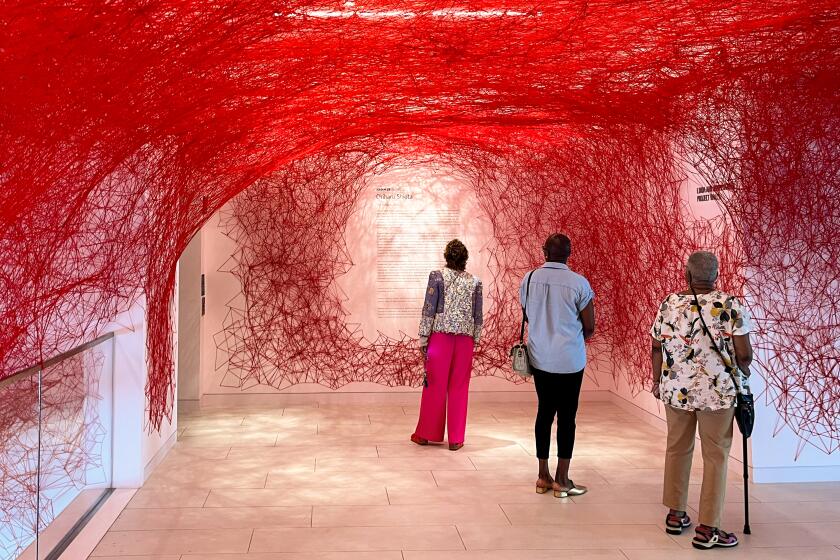Grading the Getty
Your articles on the Getty Center a year later mirror the problem the critics say the museum itself has (“How Does It Work for the People?” by Christopher Knight and Nicolai Ouroussoff, Dec. 6).
The articles seemed as hard to get through as they would have us believe the museum is to get to. Your art and architecture critics fall into the trap of making museums and art such a separate, mysterious “event” that the common person couldn’t possibly integrate them into his life as easily as we do the shopping mall.
There is no question there are problems with the billion-dollar project. Give us more bathrooms and a bigger bookstore, protect us from the weather and get us there without sitting in the driveway with our engines running for 45 minutes. However, on a recent spontaneous trip to the museum, I parked at the Veterans Hospital, boarded a shuttle, and arrived unharried 15 minutes later. I didn’t battle crowds, I took in the majestic views of L.A., ate a wonderful meal at the restaurant, walked through the gardens, spent an hour looking at the art, and left wanting to return soon.
Getting there easily and often can be done; advertise that.
STEVEN HARRISON
Claremont
*
Ouroussoff missed a key point. Richard Meier and the Getty Center have brought citizens of the City of Angels new optimism and great joy. After several years of negativity (fires, mudslides and riots), what could be more lovely than a hillside oasis that offers a reprieve from it all?
You really must consider the big picture.
KAREN GRAY
Malibu
*
Ouroussoff’s report contains an error. He says that “the decision to build museum galleries that cannot expand to accommodate further acquisitions seems an increasingly strange one. . . .”
There was no such decision; in fact, an area in the West Pavilion (L2 level) of almost 10,000 square feet was designed and built to serve as galleries in the future.
JOHN WALSH
Director, J. Paul Getty Museum
Los Angeles
*
The Getty Center’s bias toward the automobile driver may fit in well with the Southern California lifestyle but it does a great disservice to those who have to rely on public transportation to get there. Whenever the Getty has to close because of overcrowding, it is those who don’t arrive by car who are sacrificed first. Many of these people are the elderly, minorities, the disabled, and the poor--groups the Getty has stated that it is trying to reach.
I cannot understand why the Getty does not set up a system of reservations for walk-ins so that everyone can have equal access to this important cultural site.
LOUIS PEREZ
Studio City
*
I love the Getty Center!
FRED GUAJARDO
Pomona
More to Read
The biggest entertainment stories
Get our big stories about Hollywood, film, television, music, arts, culture and more right in your inbox as soon as they publish.
You may occasionally receive promotional content from the Los Angeles Times.






